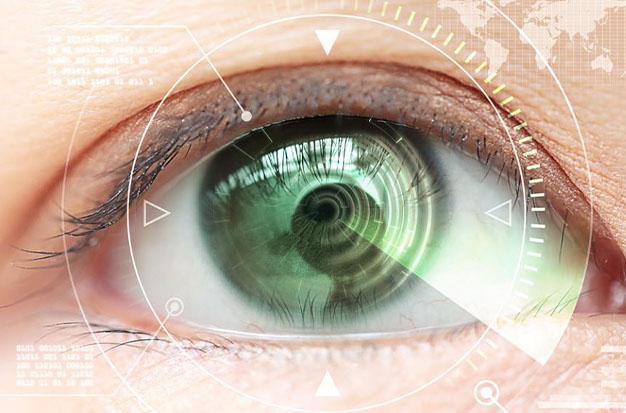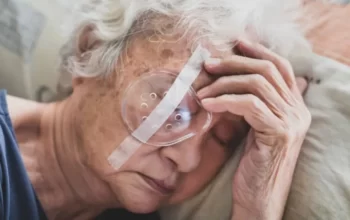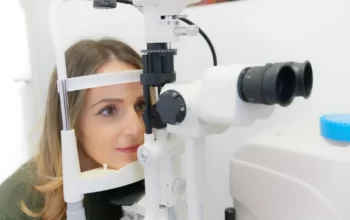
The typically clear lens of the eye becomes clouded due to a cataract. Cataract sufferers may compare viewing through clouded lenses to looking through a frosty or fogged-up window. It can be more challenging to read, drive a car (especially at night), or notice the expression on a friend’s face when one’s vision is clouded by cataracts.
Most cataracts grow slowly and don’t initially impair your vision. However, cataracts will eventually obstruct your vision over time.
Stronger illumination and spectacles can initially help you manage cataracts. However, if your normal activities are hampered by your poor vision, cataract surgery may be necessary. The good news is that cataract surgery is typically a risk-free, successful treatment.
What Is A Cataract?
The eyes’ natural clear lenses get hazy and start to harden as we age. A cataract is what is now opaque above the lens. Cataracts make it challenging to see because they block light rays from going through the lens. There can only be one cataract in each eye, and they cannot spread from one eye to the other. Cataracts can form in either one or both eyes.
What Does A Cataract Look Like?
You might see an opaque or almost-white spot anywhere over your eye. It may not be visible in the early stages or if it’s at the back of your eye.
In the later stages, it may look like a milky or amber film covering most of your eye. We call this a mature cataract. At this stage, your cataract will be visible in the mirror and to other people.
What Is The First Sign Of Cataracts?
Many of your friends may already have cataracts if you’re becoming older. The question “What is the first indicator of cataracts?” may be one that you are asking. The issue is that early cataracts don’t exhibit any noticeable symptoms. Since many people find it difficult to notice any changes in their vision, adults over 60 should have frequent eye exams from a reputable Eye Consultants of Pennsylvania eye doctor.
Why Do Cataracts Occur?
Cataracts are a normal feature of aging and not a disease. Proteins degrade, accumulate, and harden on the lens as the eye ages, causing light to scatter rather than focus on the lens. As a result, the above-mentioned visual modifications, such as halo vision or foggy vision, take place. One in five adults will develop early cataract formation in one or both eyes before the age of 40. Cataracts can advance in your 50s and typically become a problem beyond the age of 60. Although cataracts can be influenced by both genetics and lifestyle choices, they typically grow very slowly in both cases.

What Are The Stages Of Cataracts?
Cataracts are often tiny and have little effect on vision in the early stages. Since there are no early-stage symptoms, the majority of people aren’t even aware that they have one. But the sooner a cataract is identified, the better; and the only surefire way to do so is through a routine cataract vision examination at our Cataract Center of Excellence.
With a later-stage cataract, your eyesight might get much worse and you might suffer double, hazy, or blurred vision. Many of our patients experience night vision issues for the first time while driving. In their later stages, cataracts can become clearly visible as a milky white spot on the lens, partially or completely obscuring it and making it extremely difficult to see when driving, reading, or watching television.
Nine Signs You May Have Cataracts
Your eye’s lens becomes clouded due to a cataract, which impairs your vision. The majority of cataracts form gradually and won’t initially impair your vision. Until your cataracts are further advanced, you might not even be aware that you have them. Cataracts can eventually cause blindness, although surgery can also temporarily restore vision. It’s crucial to visit your optometrist regularly so they can keep an eye on your cataracts and advise you when it’s time for treatment.
Blurry Vision
Vision blurring is the primary and most prevalent symptom. Your vision can be hazy, filmy, or foggy. Less light can reach your retina as your cataracts worsen (the back part of your eye, which detects light).
You might notice some blurry areas in your field of vision if your cataracts are still in the early stages. Small areas of the spots will initially appear, and they will gradually get bigger. These hazy areas might make regular tasks more challenging if your cataracts deteriorate.
Brown Or Yellowish Eyes
Cataracts cause discoloration of the lenses in your eyes. At first, they become tinged yellow and later, in more severe cases, brown. This can affect the way you see colors around you and make it more difficult to tell the difference between colors, especially black, brown, blue, purple, and green.
Light And Glare Sensitivity
As the first sign of cataracts, you might notice glare, light sensitivity, and haloes surrounding light sources. Light can easily enter your eye through clear glasses and focus on your retina. However, cloudy lenses scatter light, which results in glare, halo effects around lights, and light sensitivity, even in dimly lit environments. This phenomenon can occur both indoors (for example, perceiving haloes around ceiling lights) and outdoors (eg more extreme glare from streetlights).
Difficulty Seeing At Night
You may first notice abnormalities in your night vision when cataracts are still in the early stages. You might not notice your eyesight decreasing or darkening due to cataracts throughout the day when there is enough natural light to make up for it. However, at night, this might be more obvious.
When working at night, at dusk, or in the dawn, you can discover that you require more light. You might need to make your digital gadgets’ screens brighter when you’re at home. Brightening your screens won’t help, though, as your cataracts get worse.
Difficulty Reading
The lens in your eye is made of proteins and water. When these proteins are aligned, your lens is clear. When you have cataracts, these proteins clump together and make the lens cloudy, which makes reading difficult, especially if the text is small eg on medicine or food labels, in books or newspapers.
Double Vision Or Diplopia
When you simultaneously perceive two images of the same object, this is known as double vision or diplopia. These photos may be stacked one above the other or placed side by side. Diplopia can only be brought on by cataracts when you close one eye; when both of your eyes are open, diplopia is brought on by a condition known as strabismus.
Faded Colours And Hazy Objects
As your cataracts grow and your lenses become more cloudy, colors may appear faded and dull. Your vision will also become less sharp.
Changing Contact Lenses Or Glasses Frequently
As your cataracts get worse, you’ll find that you need a stronger prescription for your contacts or glasses. This is a temporary fix and you will eventually need treatment for your cataracts.
As your cataracts develop, you may notice a temporary improvement in your near vision — this is called second sight. It occurs when cataracts begin in the center of your lenses, causing them to temporarily swell. This swelling improves their ability to focus light from near distances. However, this effect does not last and you will eventually see your near vision deteriorate again.
Filmy Vision
Your lenses may develop a persistent coating as a result of cataract damage. Your eyes can appear to be shielded by a thin layer of cloth. This won’t go away, and it can even get worse with time. Your ability to perceive depth may be impacted, and headaches and eye strain may result.
It’s crucial to consult your doctor or optometrist if you experience any of these cataract symptoms so you can receive treatment and restore your vision.
What Should You Do If You Think You Might Have Cataracts?
Your eye doctor will be able to see cataracts even if your symptoms are modest and you are unable to. Therefore, it’s crucial to have frequent eye exams. It’s crucial to find cataracts early on. A thorough eye checkup is generally advised every one to two years, depending on age and medical history. Click here to read more about what to expect during an eye exam.
The necessity for glasses following cataract surgery has fortunately been reduced thanks to recent developments in intraocular lenses, or IOLs (the artificial lens that replaces the natural lens that has gotten clouded by a cataract).
Conclusion
You might be interested in learning more about cataract surgery if you suspect you have cataracts. Even though early-stage cataracts do not necessitate surgery, doing so can prevent your vision difficulties from getting worse and may even make it unnecessary for you to wear glasses or contact lenses.
Keep in mind that cataract surgery carries dangers, just like any invasive procedure. However, the advantages of having cataract surgery typically outweigh the dangers, which are typically negligible. It’s crucial to consider the advantages and disadvantages of cataract surgery with your optician or eye specialist before making a choice.



